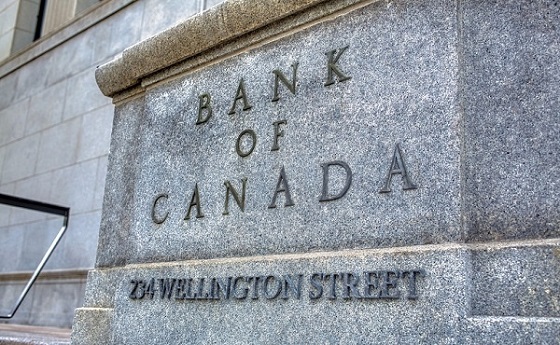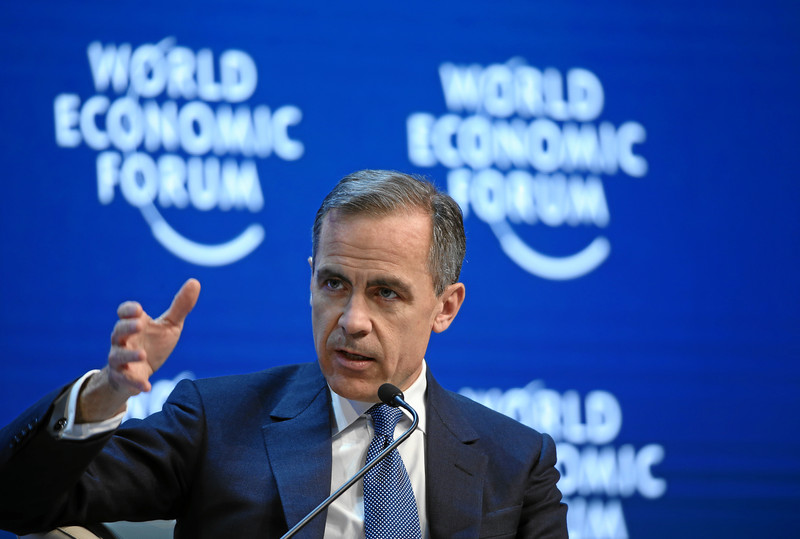Banks
Hush Money: The Untold Dangers and Delusions of Central Bank Digital Currency

Banks
Scrapping net-zero commitments step in right direction for Canadian Pension Plan

From the Fraser Institute
By Matthew Lau
And in January, all of Canada’s six largest banks quit the Net-Zero Banking Alliance, an alliance formerly led by Mark Carney (before he resigned to run for leadership of the Liberal Party) that aimed to align banking activities with net-zero emissions by 2050.
The Canada Pension Plan Investment Board (CPPIB) has cancelled its commitment, established just three years ago, to transition to net-zero emissions by 2050. According to the CPPIB, “Forcing alignment with rigid milestones could lead to investment decisions that are misaligned with our investment strategy.”
This latest development is good news. The CPPIB, which invest the funds Canadians contribute to the Canada Pension Plan (CPP), has a fiduciary duty to Canadians who are forced to pay into the CPP and who rely on it for retirement income. The CPPIB’s objective should not be climate activism or other environmental or social concerns, but risk-adjusted financial returns. And as noted in a broad literature review by Steven Globerman, senior fellow at the Fraser Institute, there’s a lack of consistent evidence that pursuing ESG (environmental, social and governance) objectives helps improve financial returns.
Indeed, as economist John Cochrane pointed out, it’s logically impossible for ESG investing to achieve social or environmental goals while also improving financial returns. That’s because investors push for these goals by supplying firms aligned with these goals with cheaper capital. But cheaper capital for the firm is equivalent to lower returns for the investor. Therefore, “if you don’t lose money on ESG investing, ESG investing doesn’t work,” Cochrane explained. “Take your pick.”
The CPPIB is not alone among financial institutions abandoning environmental objectives in recent months. In April, Canada’s largest company by market capitalization, RBC, announced it will cancel its sustainable finance targets and reduce its environmental disclosures due to new federal rules around how companies make claims about their environmental performance.
And in January, all of Canada’s six largest banks quit the Net-Zero Banking Alliance, an alliance formerly led by Mark Carney (before he resigned to run for leadership of the Liberal Party) that aimed to align banking activities with net-zero emissions by 2050. Shortly before Canada’s six largest banks quit the initiative, the six largest U.S. banks did the same.
There’s a second potential benefit to the CPPIB cancelling its net-zero commitment. Now, perhaps with the net-zero objective out of the way, the CPPIB can rein in some of the administrative and management expenses associated with pursuing net-zero.
As Andrew Coyne noted in a recent commentary, the CPPIB has become bloated in the past two decades. Before 2006, the CPP invested passively, which meant it invested Canadians’ money in a way that tracked market indexes. But since switching to active investing, which includes picking stocks and other strategies, the CPPIB ballooned from 150 employees and total costs of $118 million to more than 2,100 employees and total expenses (before taxes and financing) of more than $6 billion.
This administrative ballooning took place well before the rise of environmentally-themed investing or the CPPIB’s announcement of net-zero targets, but the net-zero targets didn’t help. And as Coyne noted, the CPPIB’s active investment strategy in general has not improved financial returns either.
On the contrary, since switching to active investing the CPPIB has underperformed the index to a cumulative tune of about $70 billion, or nearly one-tenth of its current fund size. “The fund’s managers,” Coyne concluded, “have spent nearly two decades and a total of $53-billion trying to beat the market, only to produce a fund that is nearly 10-per-cent smaller than it would be had they just heaved darts at the listings.”
Scrapping net-zero commitments won’t turn that awful track record around overnight. But it’s finally a step in the right direction.
Banks
Top Canadian bank studies possible use of digital dollar for ‘basic’ online payments

From LifeSiteNews
A new report released by the Bank of Canada proposed a ‘promising architecture well-suited for basic payments’ through the use of a digital dollar, though most Canadians are wary of such an idea.
Canada’s central bank has been studying ways to introduce a central bank digital currency (CBDC) for use for online retailers, according to a new report, despite the fact that recent research suggests Canadians are wary of any type of digital dollar.
In a new 47-page report titled, “A Retail CBDC Design For Basic Payments Feasibility Study,” which was released on June 13, 2025, the Bank of Canada (BOC) identified a “promising architecture well-suited for basic payments” through the use of a digital dollar.
The report reads that CBDCs “can be fast and cheap for basic payments, with high privacy, although some areas such as integration with retail payments systems, performance of auditing and resilience of the core system state require further investigation.”
While the report authors stopped short of fully recommending a CBDC, they noted it is a decision that could happen “outside the scope of this analysis.”
“Our framing highlights other promising architectures for an online retail CBDC, whose analysis we leave as an area for further exploration,” reads the report.
When it comes to a digital Canadian dollar, the Bank of Canada last year found that Canadians are very wary of a government-backed digital currency, concluding that a “significant number” of citizens would resist the implementation of such a system.
Indeed, a 2023 study found that most Canadians, about 85 percent, do not want a digital dollar, as previously reported by LifeSiteNews.
The study found that a “significant number” of Canadians are suspicious of government overreach and would resist any measures by the government or central bank to create digital forms of official money.
The BOC has said that it would continue to look at other countries’ use and development of CBDCs and will work with other “central banks” to improve so-called cross border payments.
Last year, as reported by LifeSiteNews, the BOC has already said that plans to create a digital “dollar,” also known as a central bank digital currency (CBDC), have been shelved.
Digital currencies have been touted as the future by some government officials, but, as LifeSiteNews has reported before, many experts warn that such technology would restrict freedom and could be used as a “control tool” against citizens, similar to China’s pervasive social credit system.
The BOC last August admitted that the creation of a CBDC is not even necessary, as many people rely on cash to pay for things. The bank concluded that the introduction of a digital currency would only be feasible if consumers demanded its release.
Conservative Party leader Pierre Poilievre has promised, should he ever form the government, he would oppose the creation of a digital dollar.
Contrast this to Canada’s current Liberal Prime Minister Mark Carney. He has a history of supporting central bank digital currencies and in 2022 supported “choking off the money” donated to the Freedom Convoy protests against COVID mandates.
-

 Bruce Dowbiggin7 hours ago
Bruce Dowbiggin7 hours agoWhat Connor Should Say To Oilers: It’s Not You. It’s Me.
-

 Business8 hours ago
Business8 hours agoFederal fiscal anchor gives appearance of prudence, fails to back it up
-

 Business6 hours ago
Business6 hours agoThe Passage of Bill C-5 Leaves the Conventional Energy Sector With as Many Questions as Answers
-

 Alberta4 hours ago
Alberta4 hours agoAlberta poll shows strong resistance to pornographic material in school libraries
-

 Crime3 hours ago
Crime3 hours agoFlorida rescues 60 missing kids in nation’s largest-ever operation
-

 Business2 hours ago
Business2 hours agoCanada should already be an economic superpower. Why is Canada not doing better?
-

 Banks5 hours ago
Banks5 hours agoScrapping net-zero commitments step in right direction for Canadian Pension Plan
-

 Business2 days ago
Business2 days agoBehind the latest CPI Numbers: Inflation Slows, But Living Costs Don’t


 The Bank of Canada says a central bank digital currency (CBDC) could be used to buy things, make online purchases and transfer money between family and friends; but how is this different from what we can already do now, and what then are the true motives for a CBDC? (Source of photo: Pexels)
The Bank of Canada says a central bank digital currency (CBDC) could be used to buy things, make online purchases and transfer money between family and friends; but how is this different from what we can already do now, and what then are the true motives for a CBDC? (Source of photo: Pexels) Dying, or being put to death? Central bankers say the use of cash may decline to the point where people will no longer be able to use it, making CBDC essential; a 2019 Bank of Canada survey showed nearly half of Canadians would find the disappearance of cash problematic. (Source of chart: Bank of Canada)
Dying, or being put to death? Central bankers say the use of cash may decline to the point where people will no longer be able to use it, making CBDC essential; a 2019 Bank of Canada survey showed nearly half of Canadians would find the disappearance of cash problematic. (Source of chart: Bank of Canada) Poor analogy: Using CBDC has been called having a “digital wallet,” but it’s more like a purse holding a key to a safe deposit box at a central bank vault – but one where the central bank has a duplicate key and sees into every box.
Poor analogy: Using CBDC has been called having a “digital wallet,” but it’s more like a purse holding a key to a safe deposit box at a central bank vault – but one where the central bank has a duplicate key and sees into every box. The Bank of Canada offers two major reasons why people still use cash: they prefer the privacy cash provides, or they are uncomfortable with or unable to afford the technology required for online banking. But CBDC, by definition, can’t address either of those issues. (Source of top photo: Shutterstock)
The Bank of Canada offers two major reasons why people still use cash: they prefer the privacy cash provides, or they are uncomfortable with or unable to afford the technology required for online banking. But CBDC, by definition, can’t address either of those issues. (Source of top photo: Shutterstock) Nigeria’s eNaira was the world’s first serious CBDC implementation test; in a country where half the people are cash-dependent, its primary stated goal was to increase “financial inclusion.” Depicted, official launch ceremony, October 2021. (Source of photo: Bashir Ahmad, retrieved from
Nigeria’s eNaira was the world’s first serious CBDC implementation test; in a country where half the people are cash-dependent, its primary stated goal was to increase “financial inclusion.” Depicted, official launch ceremony, October 2021. (Source of photo: Bashir Ahmad, retrieved from  Calamitous imposition: In January, Nigeria announced the enforced elimination of cash under its eNaira CBDC transition, leaving the country’s 100 million “unbanked” people with no way to buy food or other necessities; hungry Nigerians rioted in the streets. Shown at top, people queueing at a cash machine in Yola; at bottom, angry protesters demolishing a commercial bank in Benin City. (Sources of photos: (top) AP Photo/Sunday Alamba; (bottom) Michael Egbejule, retrieved from
Calamitous imposition: In January, Nigeria announced the enforced elimination of cash under its eNaira CBDC transition, leaving the country’s 100 million “unbanked” people with no way to buy food or other necessities; hungry Nigerians rioted in the streets. Shown at top, people queueing at a cash machine in Yola; at bottom, angry protesters demolishing a commercial bank in Benin City. (Sources of photos: (top) AP Photo/Sunday Alamba; (bottom) Michael Egbejule, retrieved from  Although often said to be similar to cryptocurrency, CBDC is foundationally different; crypto uses a blockchain or digital ledger to allow parties to transact without the need for a third party, while CBDC transactions require the approval of a trusted third party – i.e., the central bank. (Source of image:
Although often said to be similar to cryptocurrency, CBDC is foundationally different; crypto uses a blockchain or digital ledger to allow parties to transact without the need for a third party, while CBDC transactions require the approval of a trusted third party – i.e., the central bank. (Source of image:  No to CBDC, yes to crypto: El Salvador two years ago recognized Bitcoin as legal tender, partly because crypto’s efficiency would allow the largely poor population to save money; the country has no official announced plans to pursue CBDC. Pictured at left, the country’s popular president, Nayib Bukele. (Sources of photos: (left) La Prensa Gráfica, licensed under CC BY 3.0; (right) AP Photo/Salvador Melendez)
No to CBDC, yes to crypto: El Salvador two years ago recognized Bitcoin as legal tender, partly because crypto’s efficiency would allow the largely poor population to save money; the country has no official announced plans to pursue CBDC. Pictured at left, the country’s popular president, Nayib Bukele. (Sources of photos: (left) La Prensa Gráfica, licensed under CC BY 3.0; (right) AP Photo/Salvador Melendez) Fear of missing out: Central banks are pursuing CBDC in part due to an urgent desire simply to be part of and to steer the next wave of financial innovation – but without articulating a persuasive need or purpose. Above, the Bank of Canada building in Ottawa; below, the Federal Reserve Board Building in Washington, D.C. (Source of top photo:
Fear of missing out: Central banks are pursuing CBDC in part due to an urgent desire simply to be part of and to steer the next wave of financial innovation – but without articulating a persuasive need or purpose. Above, the Bank of Canada building in Ottawa; below, the Federal Reserve Board Building in Washington, D.C. (Source of top photo:  We see every transaction: The architects of China’s CBDC, known as the digital yuan or e-CNY, coined the euphemism “controllable anonymity” to obscure the digital currency’s actual lack of anonymity – its visibility to central bankers; “controllable” in this case means controlled by a central authority. (Source of photo:
We see every transaction: The architects of China’s CBDC, known as the digital yuan or e-CNY, coined the euphemism “controllable anonymity” to obscure the digital currency’s actual lack of anonymity – its visibility to central bankers; “controllable” in this case means controlled by a central authority. (Source of photo:  CBDC offers no anonymity or confidentiality, whereas cash offers both, an attractive characteristic for people who think it is no one’s business but their own how they spend their money. (Source of photos: Shutterstock)
CBDC offers no anonymity or confidentiality, whereas cash offers both, an attractive characteristic for people who think it is no one’s business but their own how they spend their money. (Source of photos: Shutterstock) Visible and programmable: In Russia, each digital ruble will have its own unique code, explained Ivan Zimin, Director of the Financial Technologies Department of the Bank of Russia, “which will allow tracking its lifecycle”; it will also allow the Russian government to control how people and organizations use the currency.
Visible and programmable: In Russia, each digital ruble will have its own unique code, explained Ivan Zimin, Director of the Financial Technologies Department of the Bank of Russia, “which will allow tracking its lifecycle”; it will also allow the Russian government to control how people and organizations use the currency. Happy utopia: CBDC is “a risk-free form of money that is guaranteed by the State – by its strength, its credibility, its authority,” asserts Fabio Panetta, a member of the Executive Board of the European Central Bank. (Source of photo:
Happy utopia: CBDC is “a risk-free form of money that is guaranteed by the State – by its strength, its credibility, its authority,” asserts Fabio Panetta, a member of the Executive Board of the European Central Bank. (Source of photo: 
 Disappearing cash: The fact that reportedly only 2 percent of Canadians still rely heavily on cash may give the Bank of Canada cover to impose CBDC, despite it being unnecessary, intrusive and dangerous. (Source of photo:
Disappearing cash: The fact that reportedly only 2 percent of Canadians still rely heavily on cash may give the Bank of Canada cover to impose CBDC, despite it being unnecessary, intrusive and dangerous. (Source of photo: 
